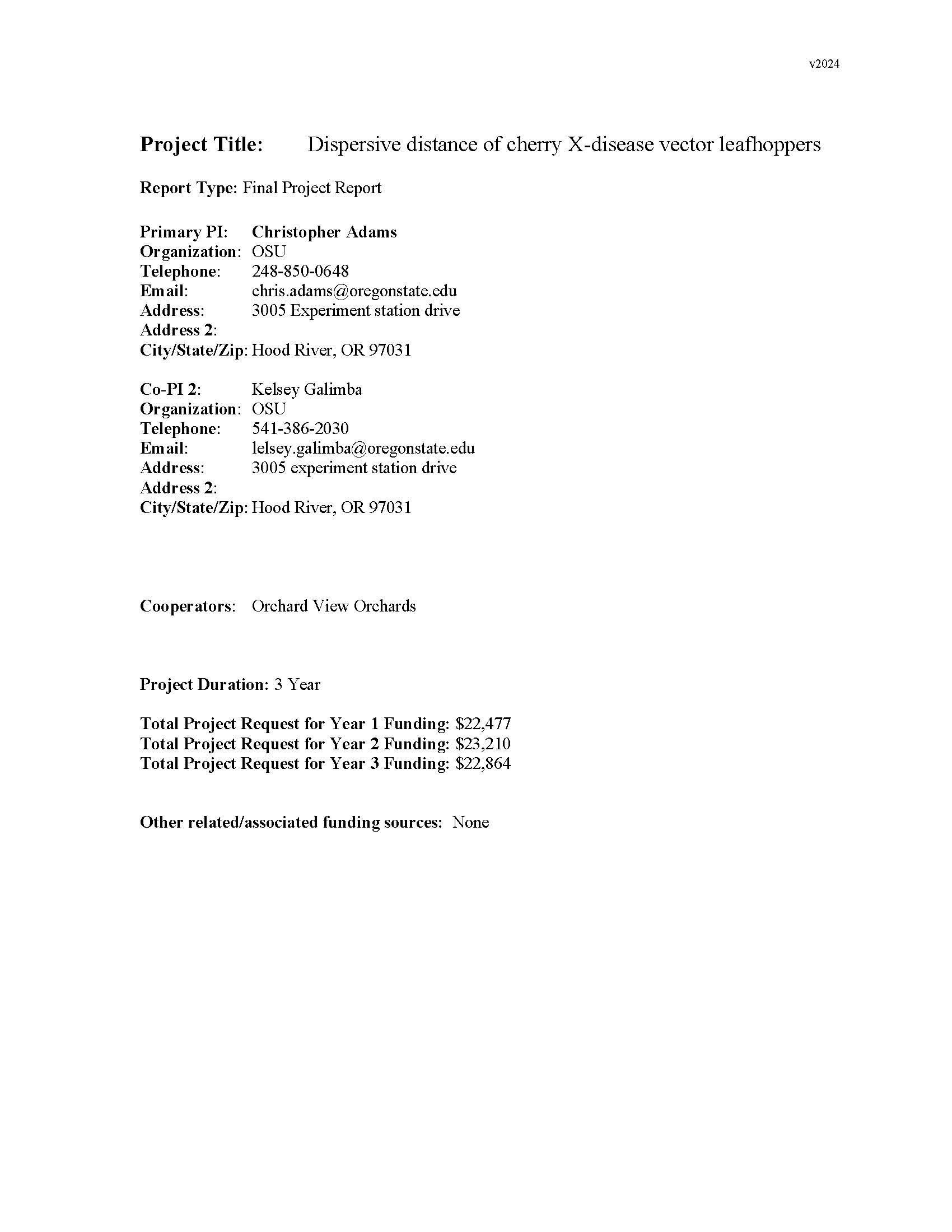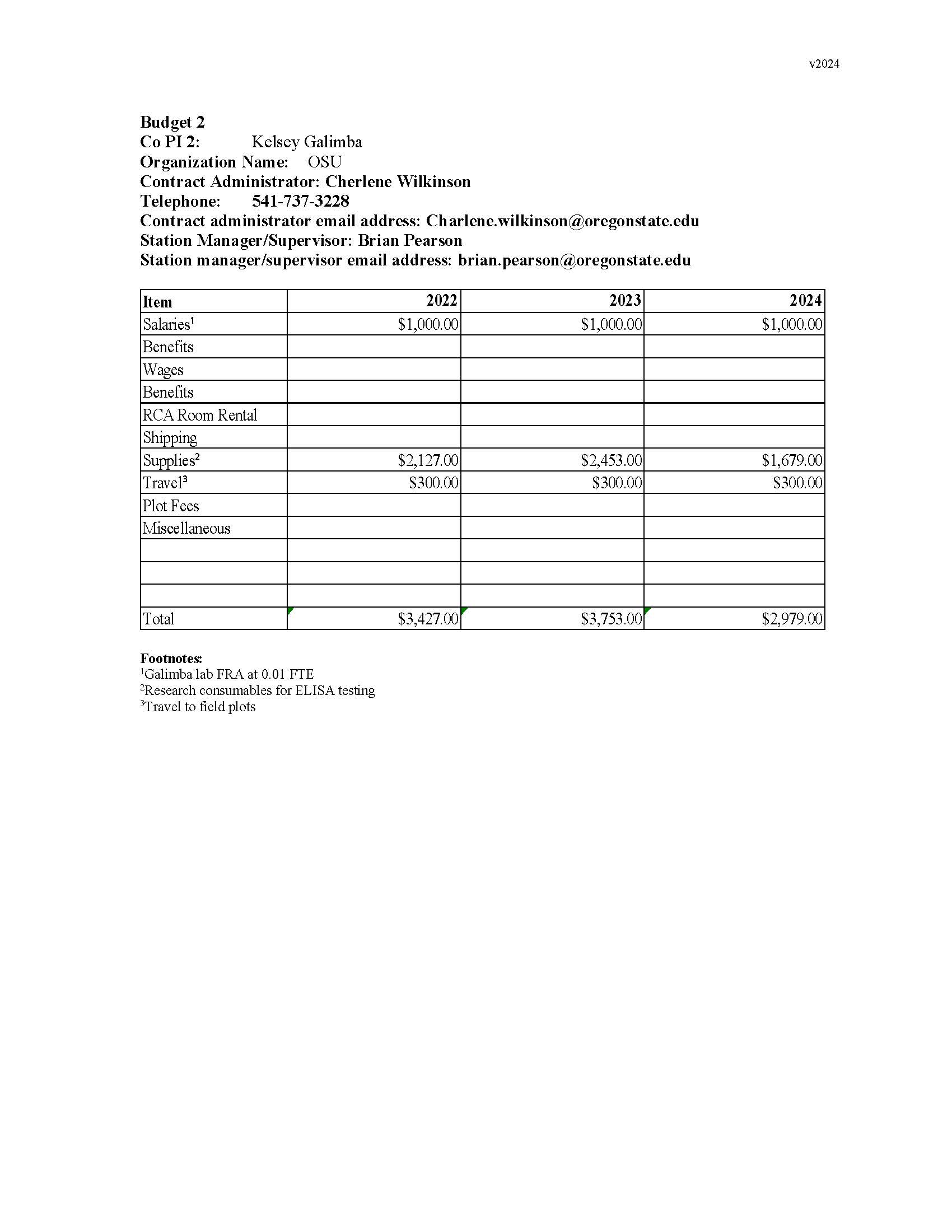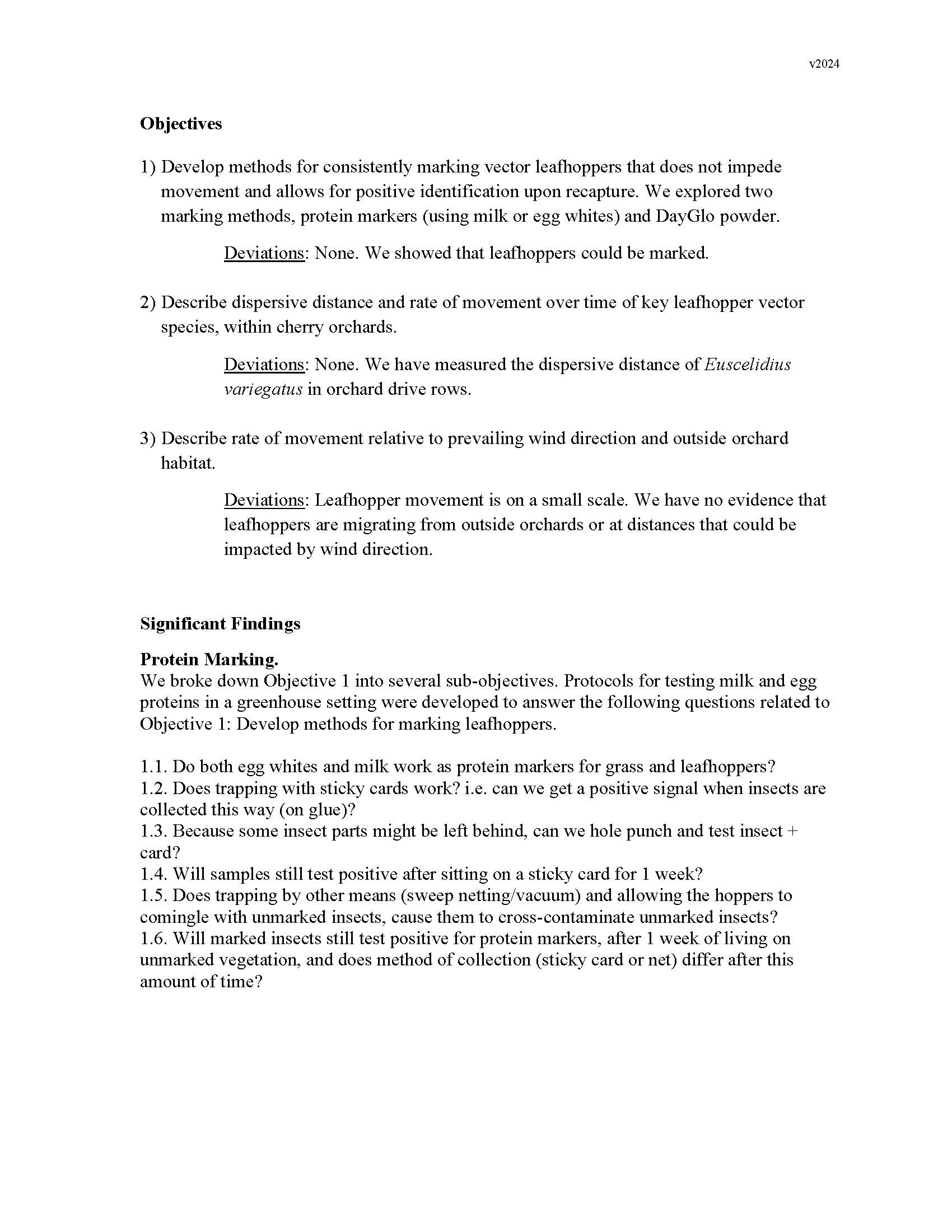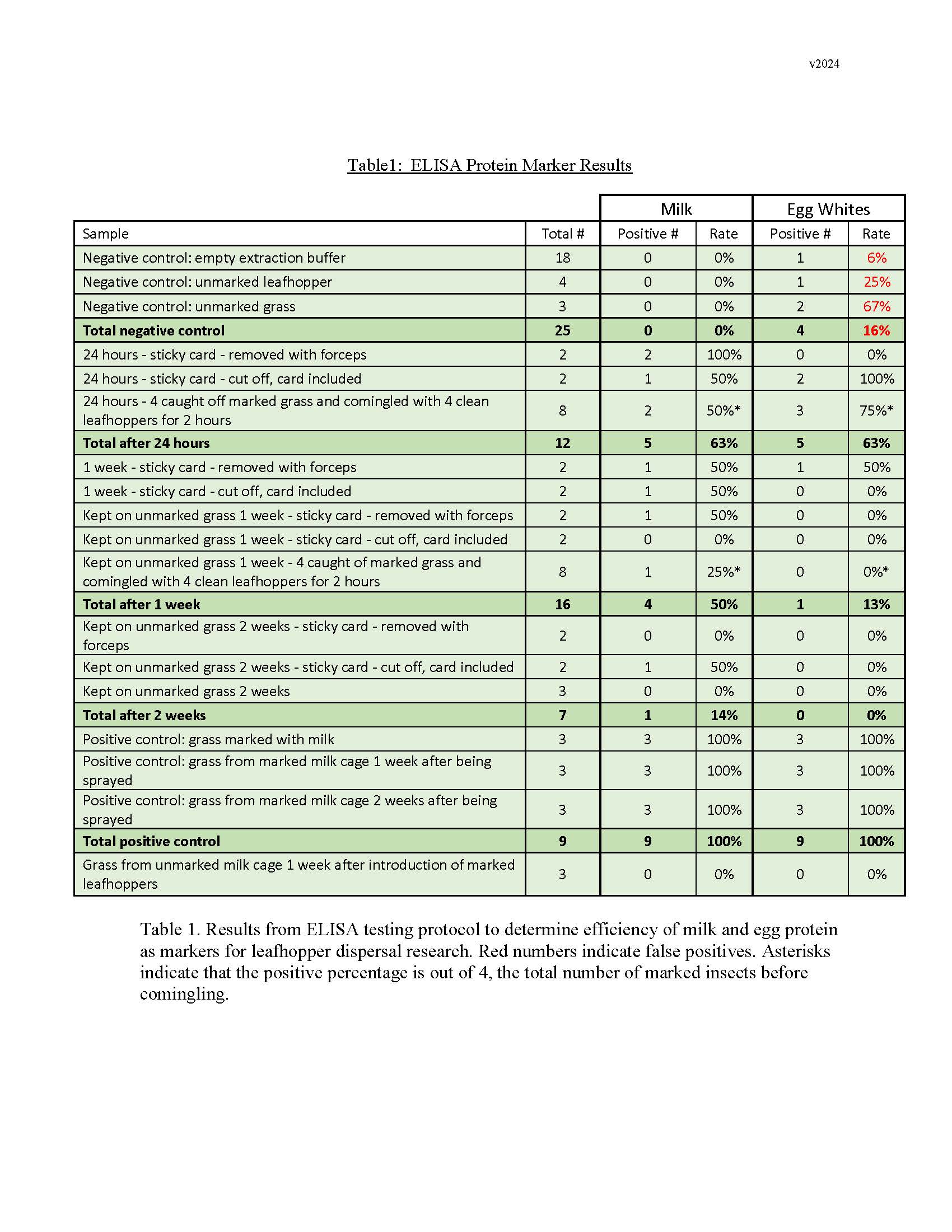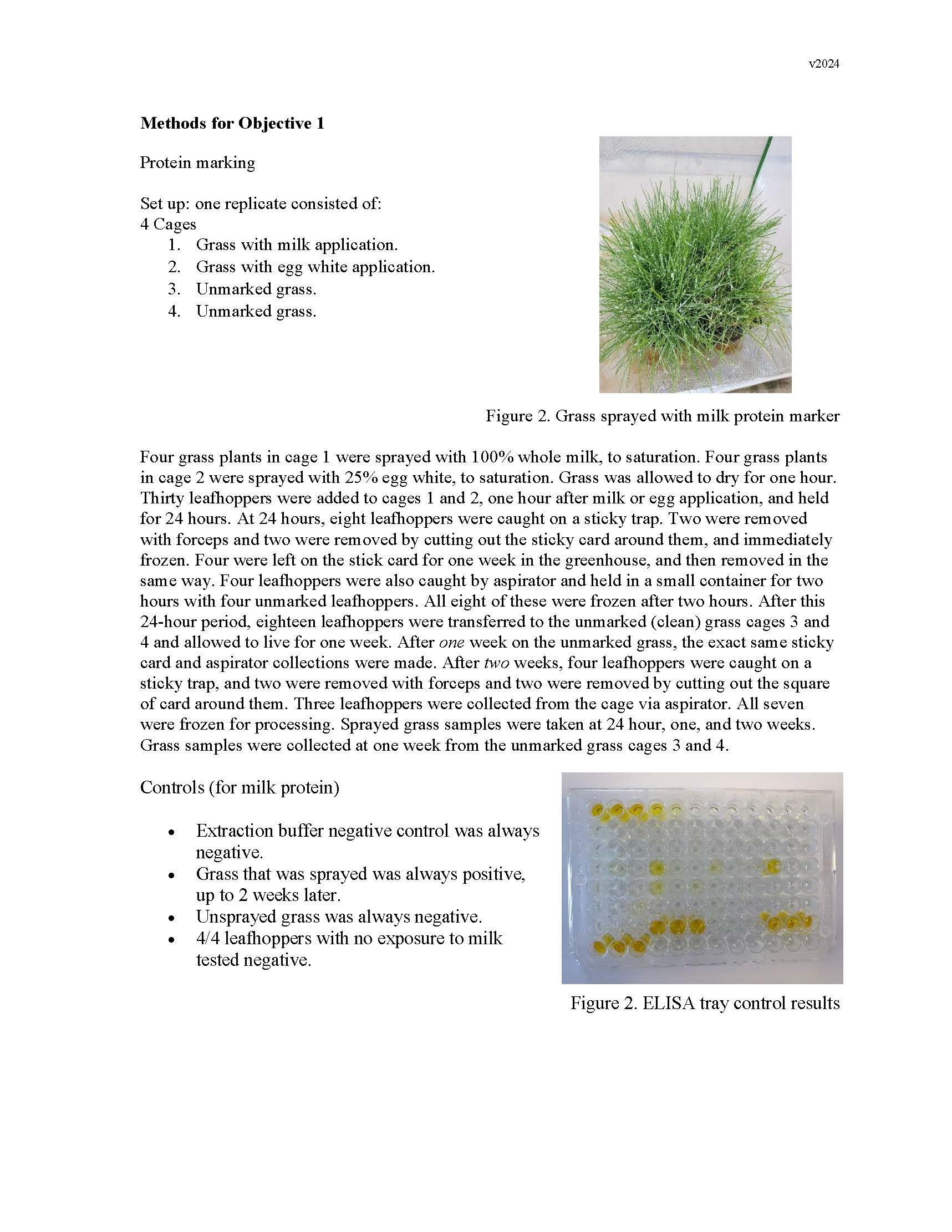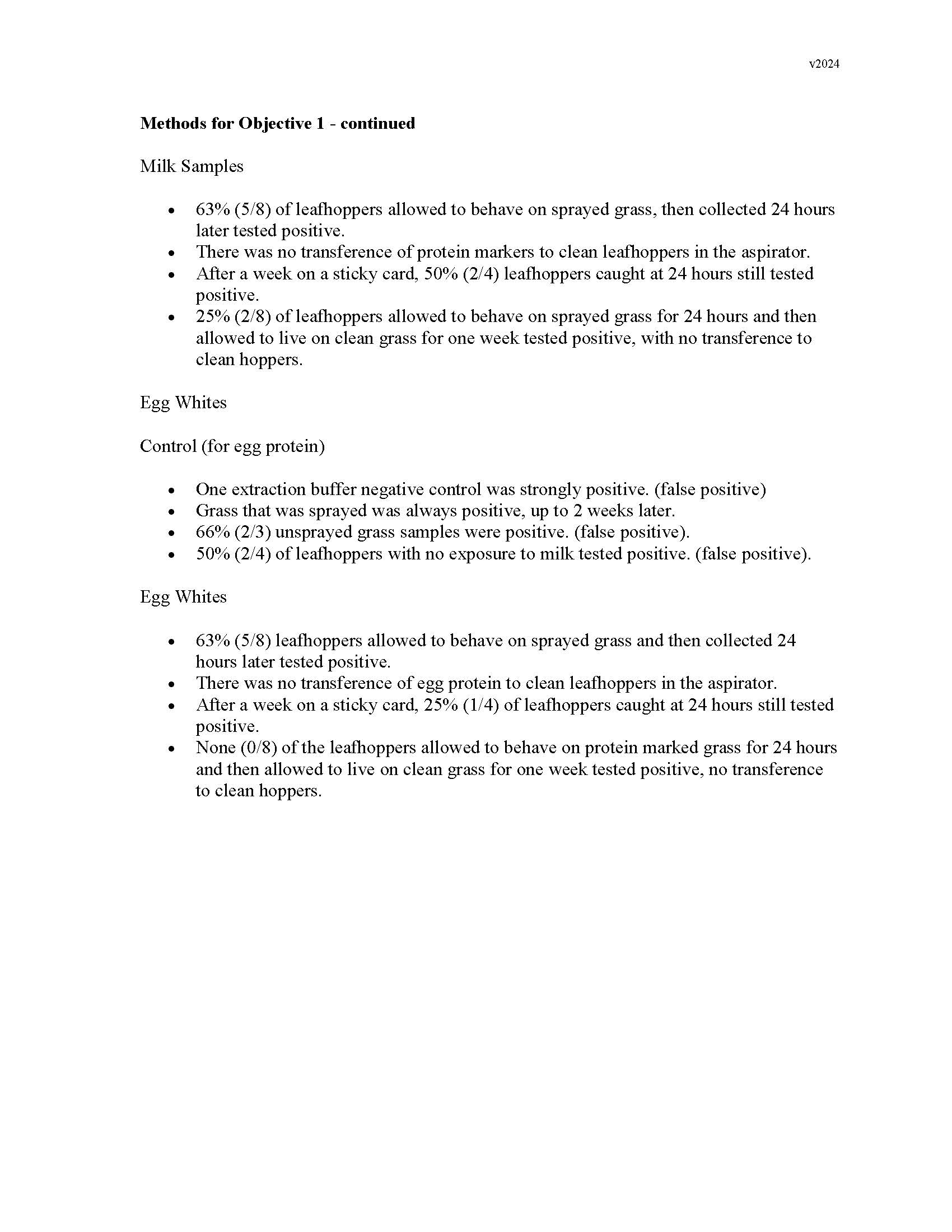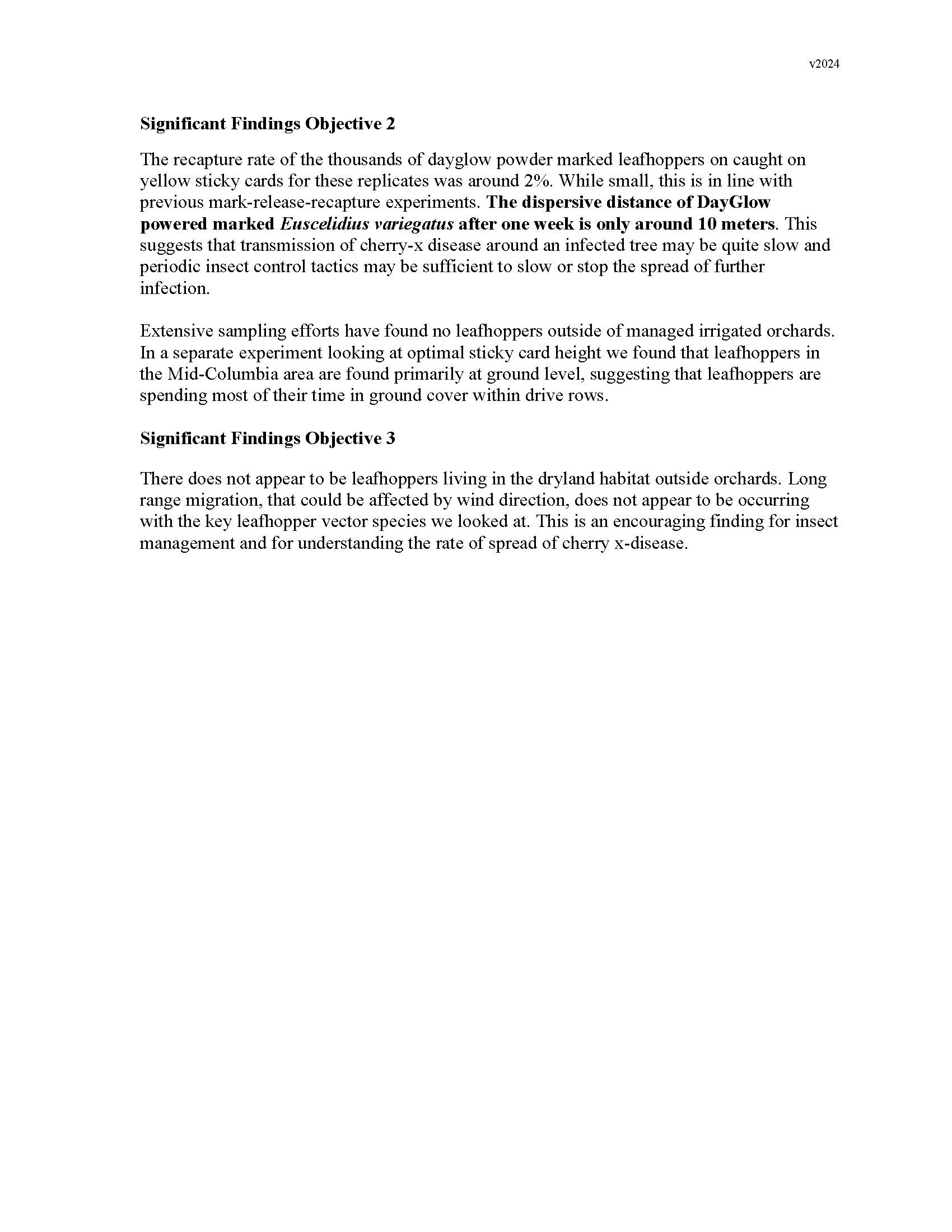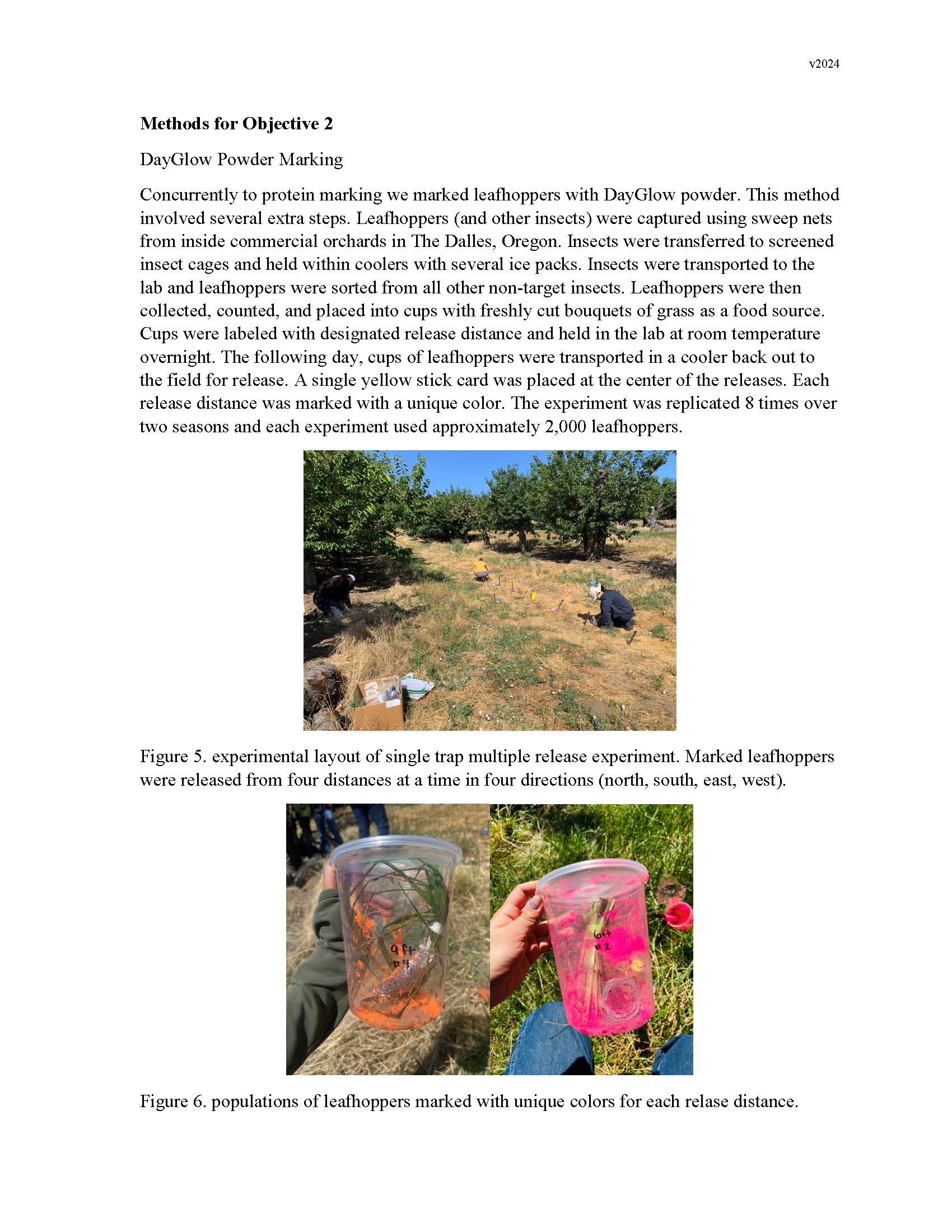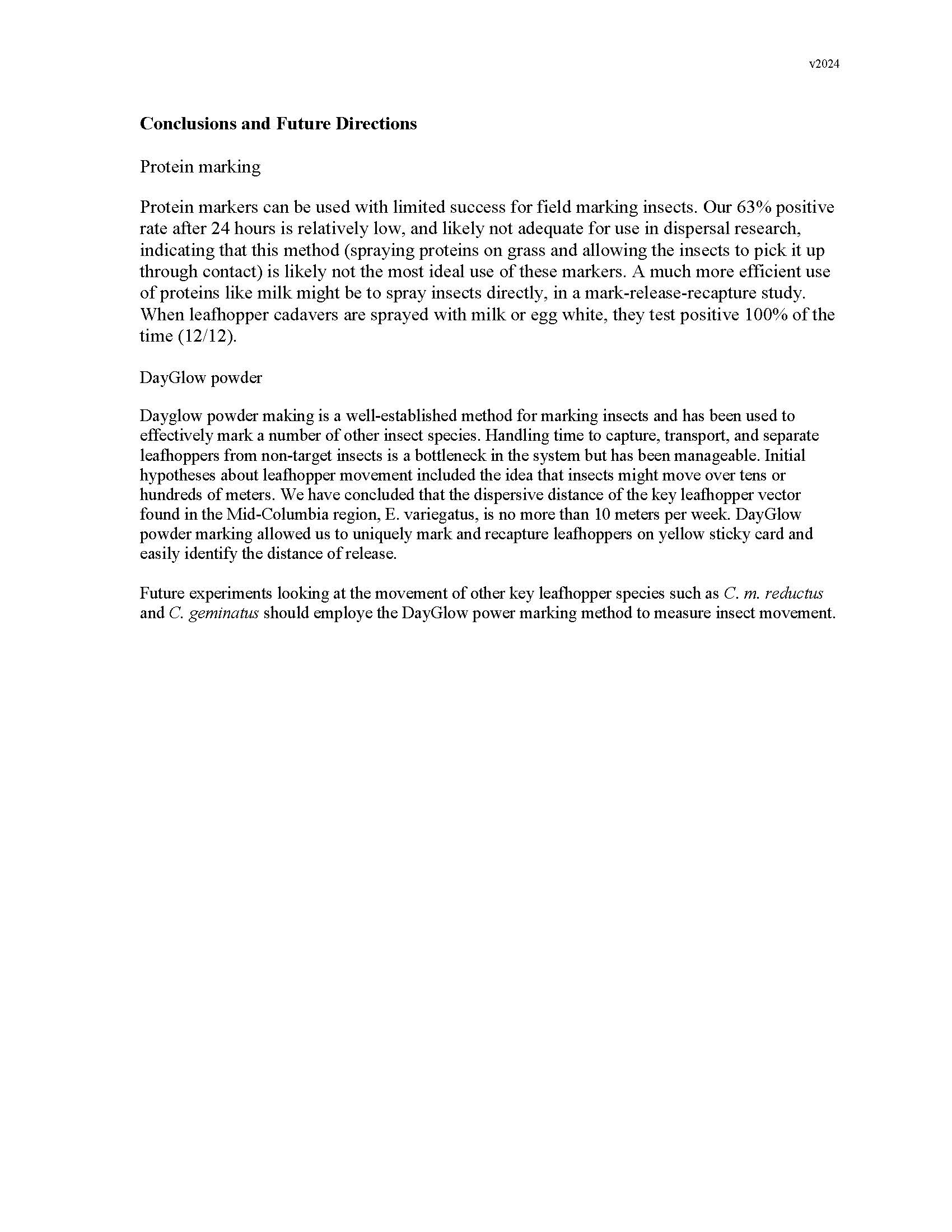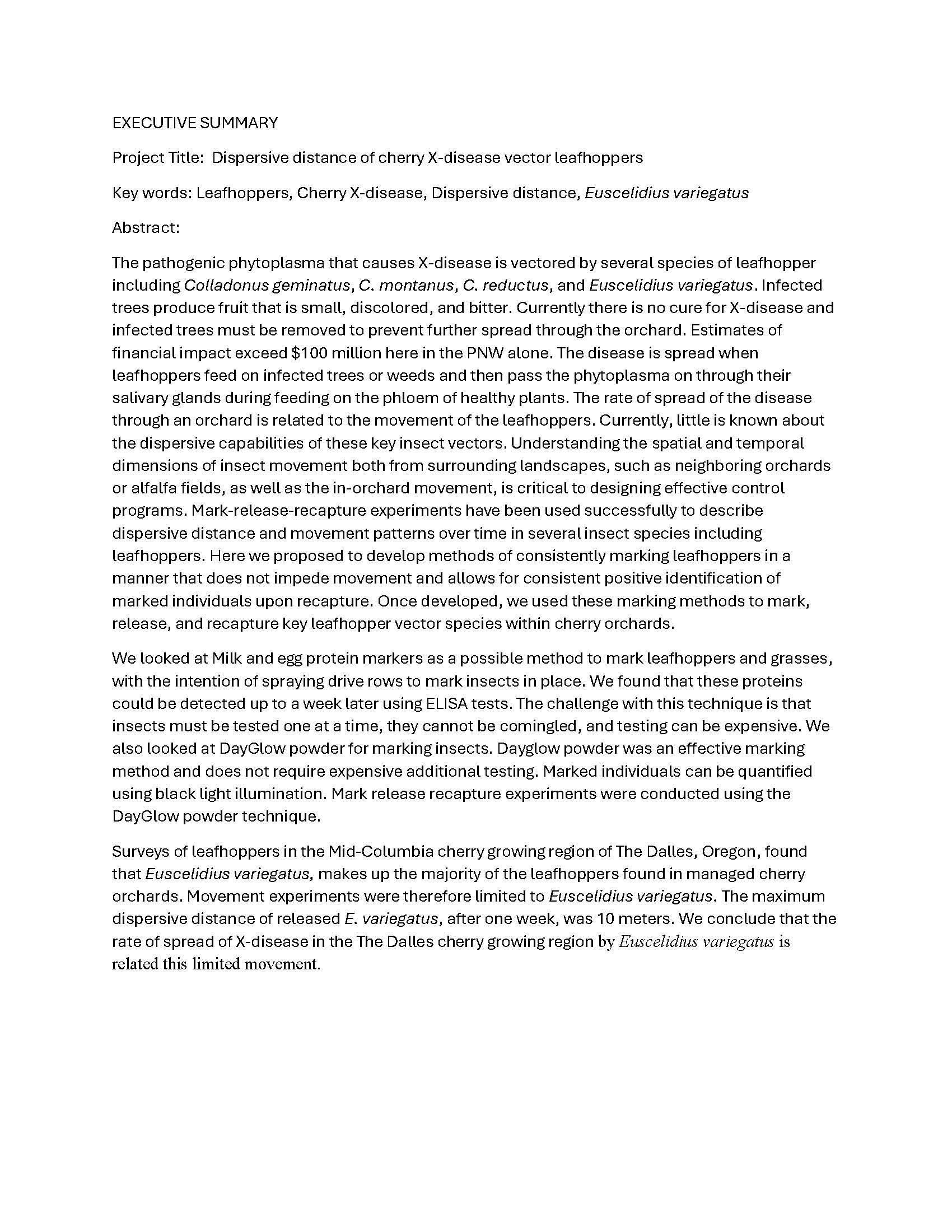Dispersive distance of cherry X-disease vector leafhoppers
Author: Christopher Adams
Published: 2025
Summary: The pathogenic phytoplasma that causes X-disease is vectored by several species of leafhopper including Colladonus geminatus, C. montanus, C. reductus, and Euscelidius variegatus. Infected trees produce fruit that is small, discolored, and bitter. Currently there is no cure for X-disease and infected trees must be removed to prevent further spread through the orchard. Estimates of financial impact exceed $100 million here in the PNW alone. The disease is spread when leafhoppers feed on infected trees or weeds and then pass the phytoplasma on through their salivary glands during feeding on the phloem of healthy plants. The rate of spread of the disease through an orchard is related to the movement of the leafhoppers. Currently, little is known about the dispersive capabilities of these key insect vectors. Understanding the spatial and temporal dimensions of insect movement both from surrounding landscapes, such as neighboring orchards or alfalfa fields, as well as the in-orchard movement, is critical to designing effective control programs. Mark-release-recapture experiments have been used successfully to describe dispersive distance and movement patterns over time in several insect species including leafhoppers. Here we proposed to develop methods of consistently marking leafhoppers in a manner that does not impede movement and allows for consistent positive identification of marked individuals upon recapture. Once developed, we used these marking methods to mark, release, and recapture key leafhopper vector species within cherry orchards. We looked at Milk and egg protein markers as a possible method to mark leafhoppers and grasses, with the intention of spraying drive rows to mark insects in place. We found that these proteins could be detected up to a week later using ELISA tests. The challenge with this technique is that insects must be tested one at a time, they cannot be comingled, and testing can be expensive. We also looked at DayGlow powder for marking insects. Dayglow powder was an effective marking method and does not require expensive additional testing. Marked individuals can be quantified using black light illumination. Mark release recapture experiments were conducted using the DayGlow powder technique. Surveys of leafhoppers in the Mid-Columbia cherry growing region of The Dalles, Oregon, found that Euscelidius variegatus, makes up the majority of the leafhoppers found in managed cherry orchards. Movement experiments were therefore limited to Euscelidius variegatus. The maximum dispersive distance of released E. variegatus, after one week, was 10 meters. We conclude that the rate of spread of X-disease in the The Dalles cherry growing region by Euscelidius variegatus is related this limited movement.
Keywords:

